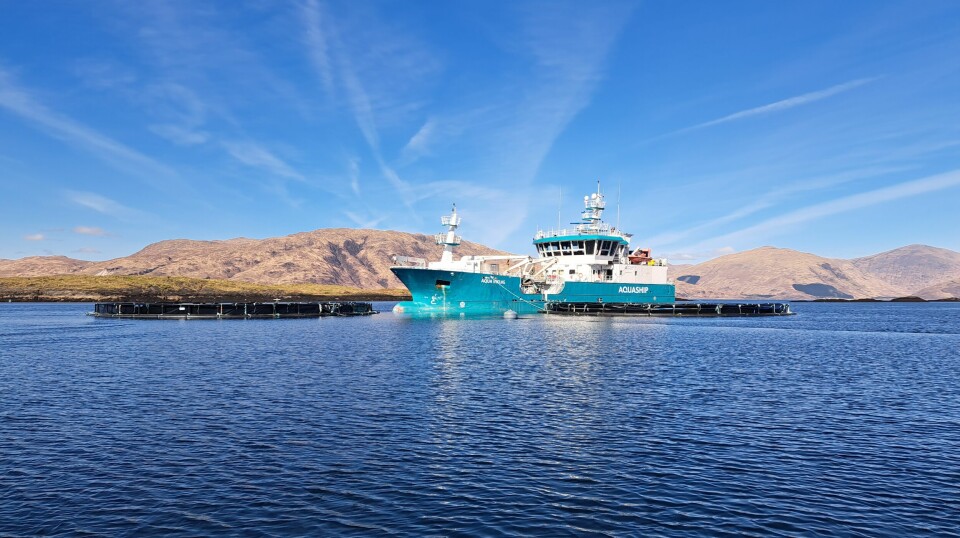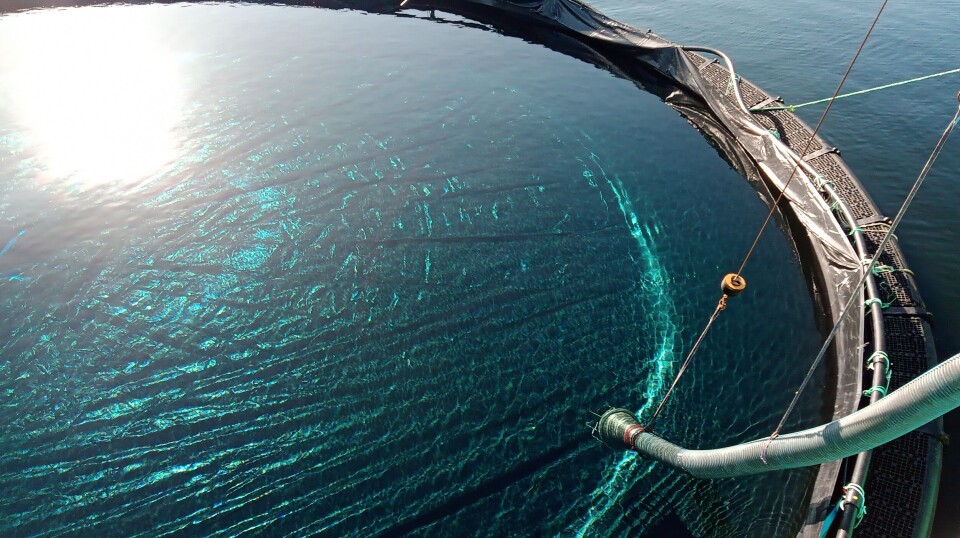
Filtered sea water seen to be 'very good' for salmon gills
Scottish farmer encouraged by trials with new desalination technique
A trial producing fresh water from sea water as part of a new strategy to treat farmed salmon for amoebic gill disease (AGD) and sea lice has seen “very encouraging” results so far.
The nanofiltration system, supplied by Norwegian company Fiizk, is thought to be a more fuel and cost-efficient method of producing fresh water than reverse osmosis (RO) which is increasingly used on wellboats to desalinate water to treat fish.
The Fiizk technology is being piloted at the fallowed Lismore North site by Scottish Sea Farms (SSF) and if successful will be rolled out to other locations.
It is the first time the container-based technology has been deployed in Scotland, although it is already in commercial use in Norway and Ireland.
Salt and metals
The unit, sited on a re-purposed feed barge, pumps seawater from depths of 10-20 metres through a pressurised filtration system that removes salt and metals, producing low salinity water, reports SSF’s staff newsletter, The Source.

Farm support manager Martin Ruddick, who is overseeing the trial, said the fresh water produced on the barge is channelled via pipework into two 90-metre circumference storage pens fitted with tarpaulins, with each pen holding 2,400m³ of water.
For the initial trial Aquaship's wellboat Aqua Viking, which is contracted to SSF, collected the water produced at Lismore North and used it to treat fish at the company’s Bloody Bay farm in the Sound of Mull.
Throughout the treatment, key fish welfare indicators were measured, along with water chemistry.
Increasing resources
SSF head of fish health Ralph Bickerdike said: “While the trial is still in the early stages, we think the low salinity water produced has been very good for gills and we expect it will work equally as well for control of sea lice.
“Together with our wellboat Inter Caledonia, which makes its own freshwater through reverse osmosis, this system has the potential to increase our resources, especially in areas like Orkney which don’t have ready access to natural freshwater.”
The company’s head of veterinary services, Ronnie Soutar, told The Source that fresh water made by either nano-filtration or reverse osmosis is more effective to kill sea lice than natural freshwater.
“We’re convinced that reverse osmosis water is giving us really good results with sea lice and AGD, and if nanofiltration is as good as that we’ll be more than happy,” said Soutar.
“The move towards pure rather than wild freshwater also fits into our drive for greater sustainability.”
Ionic composition
While the reason for the greater efficacy of manufactured fresh water is not fully understood, it’s believed to relate to the ionic composition and concentrations.
Both sea water and fresh water contain a range of salts at different concentrations. The process to remove salt from sea water appears to reduce those salts to a different concentration/composition than natural fresh water.
Scientists at Norway’s Institute of Marine Research have reported good results by using filtered sea water to remove sea lice from farmed salmon.
The filtering process removes ions such as sodium and chlorine to create a fresh water that is slightly different chemically and with a slightly higher salt level than fresh water.






















































